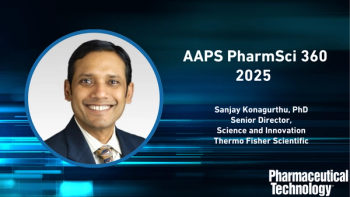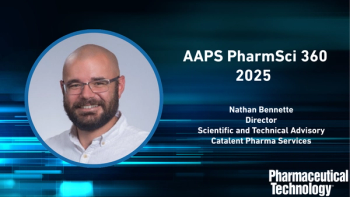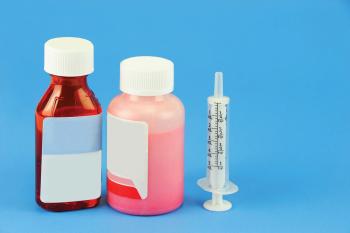
Pharmaceutical Technology Europe
- Pharmaceutical Technology Europe-11-01-2009
- Volume 21
- Issue 11
Case study: printing powders with Sticky Web technology
GlaxoSmithKline (GSK) appointed 42 Technology (42T) to evaluate existing powder dispensing approaches that could be scaled for high speed manufacturing.
The brief:
GlaxoSmithKline (GSK) appointed 42 Technology (42T) to evaluate existing powder dispensing approaches that could be scaled for highspeed manufacturing.
42T suggested an innovative precision powder dispensing technology, now known as Sticky Web, which can accurately 'print' powdered APIs onto edible or inert adhesive surfaces to create a novel dosage form.
GSK has now granted 42T worldwide pharmaceutical rights to the technology.
Powder handling is technically challenging at the best of times, but accurately filling capsules with milligram quantities of potent APIs at the manufacturing speeds and outputs required for a blockbuster product adds another layer of complexity. Manufacturers usually overcome this hurdle by bulking out actives with excipients and using mixtures for tablet pressing or capsule filling; however, there is considerable commercial interest in developing highspeed manufacturing technologies that can dispense pure active powders. A technology that can accomplish this is Sticky Web.
Henrik Weis/Getty Images
According to Keith Smith, Manager of GSK's strategic technologies department, the core technology was first proposed as a result of some "shrewd research" by 42T. "GSK first appointed 42T to conduct an independent strategic technology review and to evaluate existing, credible powder dispensing approaches that could potentially be scaled for high-speed manufacturing. We already knew of some commercial systems claiming speeds of up to 15000 doses/h, but these typically involved check weighing or volumetric techniques, which are often unsuitable for some pure APIs that require careful handling," said Smith. "The consultancy team responded not only with a detailed review of the options, but with some great new ideas of their own — including the approach we now call Sticky Web."
Sticky Web is a scalable technology capable of accurately dispensing 0.1–100 mg of powder, with a variety of particle size distributions, onto edible or inert adhesive webs or surfaces. Accuracies are typically greater than 4% and the technology can deliver commercial manufacturing speeds of up to 60000 doses/h.
Henrik Weis/Getty Images
Developing the technology
Sticky Web takes its name from a simple discovery by one of 42T's engineers, based on the following theory: when a piece of adhesive parcel tape is dipped into powder and the excess shaken off, the quantity left adhering is directly proportional to the surface area of the tape. The exact quantity depends on the combined properties of the specific adhesive and powder, but even the very first tests conducted by 42T showed consistent coverage rates of approximately 1.5 mg/cm2 with accuracies greater than ±10%.
These results led GSK and 42T to quickly establish a joint development team to create a stronger technology platform and improve the dosing accuracy — in some cases to within ±2.5%. The team studied a range of APIs with widely varying physical properties and further tested the applicability of the technology.
The author says...
The development programme progressed quickly to deliver the core approach, as well as several adhesives and designs for a prototype production machine. A number of key patent applications were also secured.
Dispensing the powder
The powder dispensing head and process are critical to the Sticky Web approach. The web, which is preprinted with adhesive further up the production line, passes around a drum where powder from a vibrating hopper is applied through drum apertures or masks to the sticky areas; any excess is tapped off using a vibrating paddle. The technique delivers uniform coverage for freeflowing powders, as well as powders that have dry clumping behaviours. It is also gentle enough for powders that require very careful handling to prevent degradation or any loss of activity.
Figure 1 shows a powder dispensing drum and coated film web ready for die cutting into individual doses. Each 2cm diameter area shown contains approximately 4.7 mg of API. The substrate is approximately 30 μm thick, giving a total coated thickness of approximately 100 μm, which allows the films to be easily rolled or folded for encapsulation or further processing. The technology also enables packaging processes to be fully merged and automated into a complete, continuous commercial production line.
Figure 1
Figure 2 shows a 3D computer-aided design model of a test rig unit delivering one dose per second. Further optimization, however, could improve this rate; for example, a multiple lane production machine with 16 lines in parallel would deliver approximately 60000 doses per hour.
Figure 2
Web films, adhesives and dissolution
Aside from the powderdispensing module, the other two main system components are the web or film carrier and the printable adhesive.
Edible or inert films have been widely used within the food processing industry for years because they are safe to ingest, while also being robust and flexible enough for standard web handling. Growing interest in thin-film drug delivery and controlledrelease encapsulation technologies has also generated unusual new films and materials that can be exploited within the sticky web process.
As part of the development programme, 42T investigated existing edible pressure-sensitive adhesives (PSA) and developed a range of new substances, which offer instant tack in the dry state and gently adhere to the steel powderdispensing drum, but also peel without leaving any residue. In addition, these new adhesives offer good powder adhesion and dissolve readily in water.
Figure 3 shows a 20× magnification of a typical powdered area generated with one of these new adhesives; the edges are clean, and there is even powder distribution and adherence of large and small particles within the sample.
Figure 3
Future developments
The bulk of development activity so far has been angled towards the pharmaceutical sector using edible flat carriers, but the adhesive could just as easily be printed onto other surfaces, including bubbles or tablets, which are then subsequently dosed with powders. Two or more substances could even be combined in the same delivery package.
The technology is also viable for virtually any industry requiring accurate, high-volume dosing of powders to improve existing manufacturing processes or generate innovative new products or processes.
"Sticky Web offers considerable promise for high-speed production environments where online inspection systems could be used to validate every powdered area and to improve process feedback, increase efficiency and reduce costs," said Smith.
One of the most interesting features of Sticky Web is the potential for improved release of active powders that have a tendency to agglomerate during dissolution when delivered via powder-coated films compared with capsules. Some initial development work has suggested a marked improvement, but further validation studies would be required for specific adhesive and powder combinations.
Howard Biddle is Managing Director of 42 Technology (UK).
Articles in this issue
about 16 years ago
The pharmaceutical packaging marketabout 16 years ago
Trends in labellingabout 16 years ago
Demographic time bombabout 16 years ago
Have your sayabout 16 years ago
Newsabout 16 years ago
Reality not insanityabout 16 years ago
Packaging: the experts' viewabout 16 years ago
Simplifying data managementabout 16 years ago
Developing a modified Pulsincap systemabout 16 years ago
Regulatory challenges of inhaler testingNewsletter
Get the essential updates shaping the future of pharma manufacturing and compliance—subscribe today to Pharmaceutical Technology and never miss a breakthrough.




